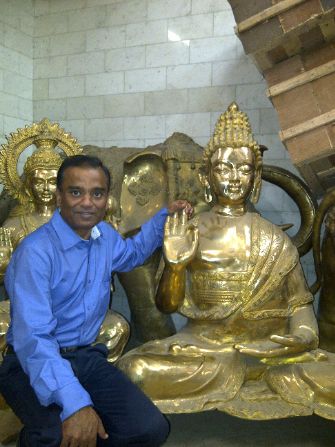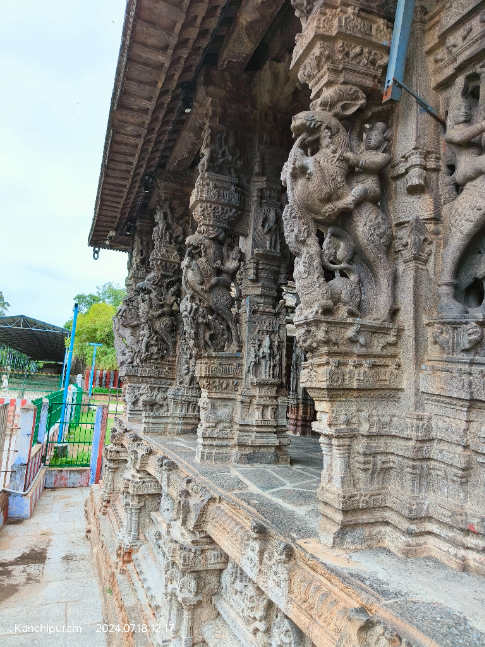Varadaraja Perumal Temple: A Sacred Abode of Lord Vishnu
-
 N Chandra
N Chandra
| Monday 22nd of July 2024 05:31:33 AM (UTC)

According to Hindu legend, Saraswati, the goddess of knowledge and wisdom, cursed Indra, the king of celestial deities. She transformed him into an elephant and condemned him to roam the earth. Indra's plight continued until Vishnu, the preserver god, intervened. Vishnu assumed the form of a majestic elephant named Hastagiri and offered Indra a ride. Hastagiri symbolizes a hill or mount in the shape of an elephant. With Vishnu's divine power, Indra was relieved of the curse and restored to his former glory.
As a testament to this divine intervention, Indra installed two silver and gold lizards in the temple. These lizards witnessed Indra's ordeal and were believed to possess mystical powers. After being freed from the curse of Saraswati, Indra placed the lizards in the temple as a symbol of his gratitude and reverence.
Furthermore, Brahma, the creator god, performed a significant yagna (fire sacrifice) at the site. However, the fast-flowing Vegavati River, which was once known as Saraswati in its river form and is now called the Palar River, threatened to wash away the site of the yagna. Vishnu laid himself flat to halt the river's flow to prevent this calamity. Vishnu successfully protected the yagna with his divine presence, allowing Brahma to complete the sacred ritual.
Emerging from the athi tree with the brilliance of a thousand suns, Vishnu manifested as Varadarajaswamy. He chose to reside permanently at this location until he was submerged in a nearby tank. The presence of Varadarajaswamy in the tank is attributed to the fact that the deity originated from a yagna performed by Brahma, the creator himself.
The story of Indra's curse, Vishnu's intervention, and Brahma's yagna all converge at this sacred temple, adding to its mythological significance and spiritual allure.
The Varadaraja Perumal Temple, also known as the Hastagiri Temple, is a sacred Hindu temple dedicated to Lord Vishnu, located in Kanchipuram, Tamil Nadu, India. The temple has a rich history and significance, dating back to the 10th century.
According to legend, the temple was built by the Chola King, Aditya I, in the 10th century. The king was a devout follower of Lord Vishnu and had a vision to construct a magnificent temple in his honour. The temple's architecture and design are attributed to the king's efforts.
The main deity, Varadaraja Perumal, is a manifestation of Lord Vishnu, depicted as a giant statue with four arms, holding a conch, discus, mace, and lotus flower. The temple's name "Varadaraja" means "the king who bestows boons" in Tamil.
The temple has undergone renovations and expansions over the centuries, with contributions from various dynasties, including the Pallavas, Cholas, and Vijayanagara Empire. The temple's architecture showcases a blend of Dravidian and Vijayanagara styles.
The Varadaraja Perumal Temple is considered one of the 108 sacred Vishnu temples, known as the Divya Desams, glorified in the works of the Alvar saints, revered Tamil poet-saints. The temple is also believed to be one of the few where Lord Vishnu is depicted reclining, symbolising his cosmic sleep, or Yoga Nidra.
The temple's significance extends beyond its architectural and historical importance. It is considered a sacred pilgrimage site for Hindus, particularly those seeking spiritual enlightenment and blessings from Lord Vishnu.
Start the conversation
Become a member of TxtTale to start commenting.
Already a member?
